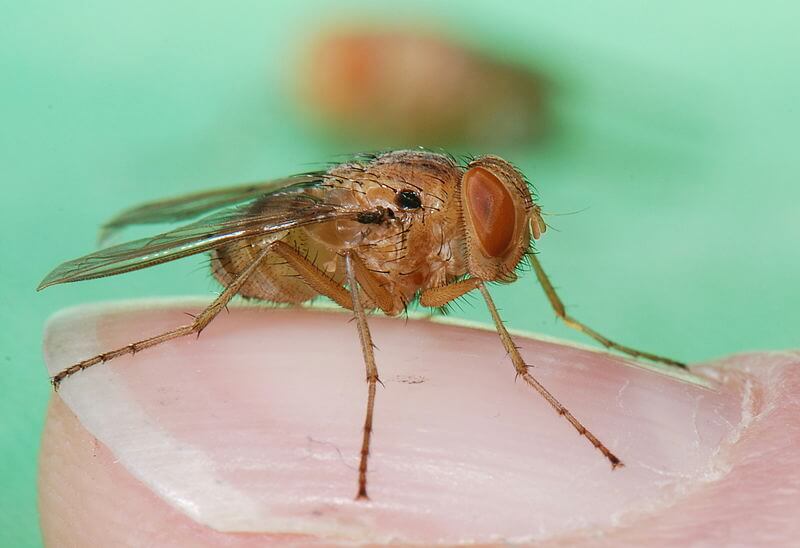The amazing hearing ability of the female Ormia fly serves as an inspiration for the production of improved hearing aids.

By: Ofir Marom
The female Ormia ochracea fly must find crickets to reproduce. To do this she traces the courtship calls of the male cricket. When she finds a suitable candidate, she lays eggs on him, and the maggots that hatch from them quickly burrow into his body, for about seven to ten days, until they hatch, but the host does not survive this forced hospitality.... As everyone who has not been able to sleep at night because of the chirping of crickets knows, finding a cricket in the house is not an easy task, all the more difficult than the task of locating a single cricket in an open field. The amazing hearing ability developed by the female Ormia fly allows her to successfully find crickets, and today her understanding is also helping to design improved hearing aids for humans.
To find the direction from which any sound is coming, our brain uses the measurement of the difference between the times it takes for the sound to reach the two ears and the measurement of the difference in the intensity of the same sound, as it is received by each ear. The great challenge of the female Ormia fly is that her ears are very close together, so the differences in sound volume and the time it reaches each ear are small and difficult to distinguish. To overcome this problem, the fly implements a technique of mechanical and neurological amplification, through which it detects time differences a thousand times (!!!) better than the human ear.
Recently, researchers have developed miniature microphones that mimic exactly this mechanism. The microphones are constructed of two diaphragms, which pick up sound vibrations. The diaphragms are connected by a flexible bridge, which can be folded, just like the bridge connecting the two eardrums in the fly's ears. As a result of this unique structure, the two ears move in opposite directions in response to differences in pressure on their outer surfaces. As with the fly, the differences in the intensity and frequency of the vibrations between the two diaphragms are measured by a sensor in the hearing aid, and thus the device succeeds in detecting the variation of the sound in space, which in fact creates a directional microphone. One of the most important applications for directional microphones is in hearing aids, since this type of microphone is very effective in reducing the influence of background noise and improving the ability to understand speech in a noisy environment. The size limit of the devices requires, for cosmetic reasons, that the distance between the two microphones inside the hearing device, which are needed to calculate the direction of the sound, be of the order of a few millimeters. According to the researchers, the application of the principle used by the Ormia fly makes it possible to produce a device with an internal noise (noise floor) about 17 decibels lower than what can be produced today, thus allowing users to hear a little better... the fly, the next time it flies near the ear their.

6 תגובות
Yair
Yotam is right. There are simulation systems that know how to provide sound from any direction in space. To simulate these sounds, the distortion created by the auricle is used. To produce the distortion maps, microphones are inserted into people's ears and well-known voices are heard from all kinds of directions. From the recorded sounds it is possible to learn the deformation of the ear structure and then simulate this deformation.
We know how to extend a spatial direction to certain sounds only, depending mainly on the frequency. For example, it is much easier to extend direction to a high frequency sound source than to a low frequency sound source.
You can say that about back and forth too.
The solution is in the way the earpiece distorts the sound.
The earpiece distorts sound coming from above differently from how it distorts sound coming from below, behind, etc.
As far as I know, we do manage to locate up and down, do an experiment with a friend or family member, close your eyes and ask him to clap his hand in front of you according to a random choice once down and once up above your head, you will see that you can locate the direction easily.
Yair - maybe you really don't succeed in locating a voice in an up-down direction.
"To find the direction from which any sound is coming, our brain uses the measurement of the difference between the times it takes for the sound to reach the two ears and the measurement of the difference in the intensity of the same sound, as it is received by each ear"
And how do we manage to locate direction up and down? After all, in such a situation there are no time differences between the ears.